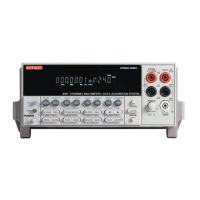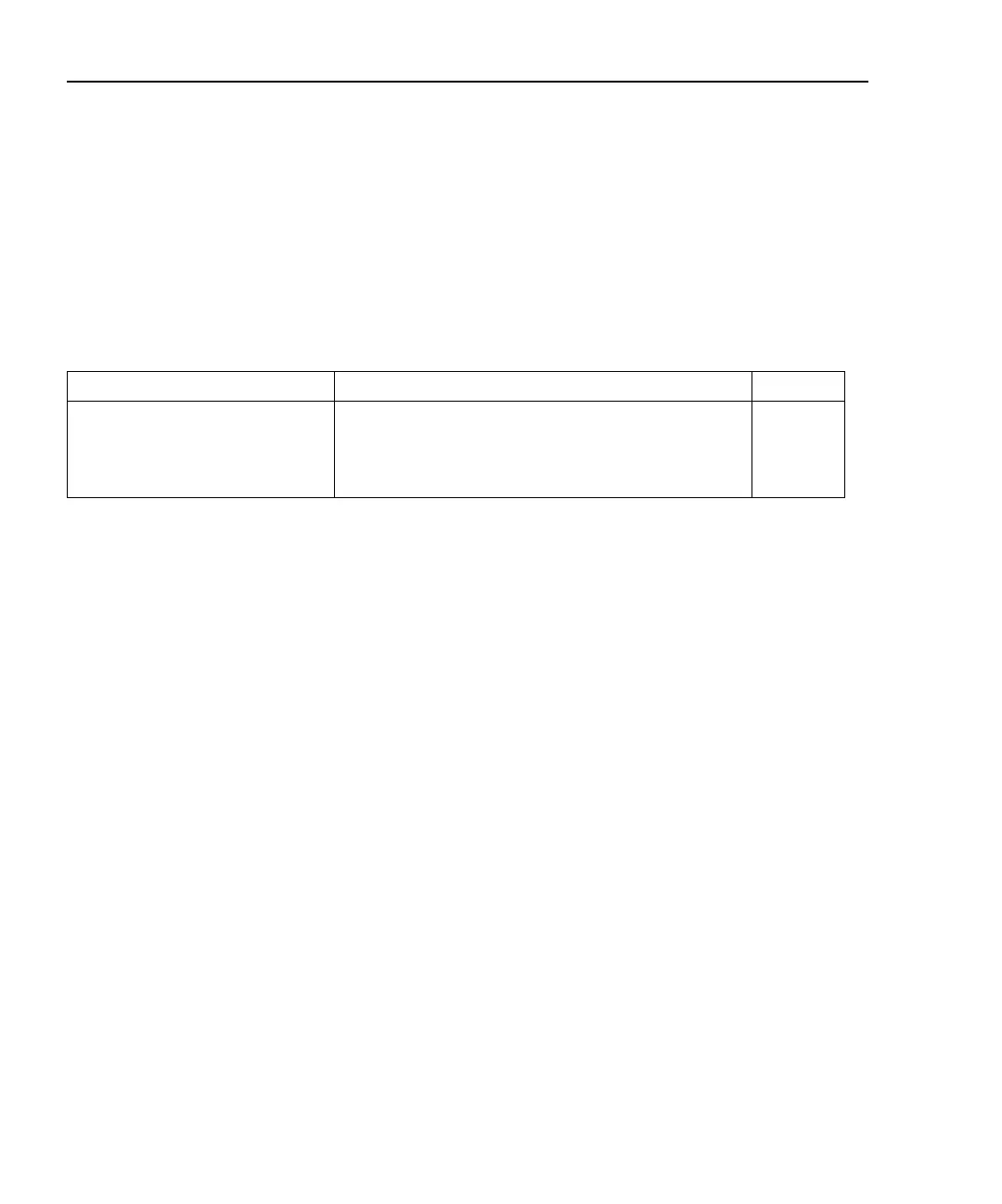14-2 FORMat and Misc SYSTem Commands Model 2701 User’s Manual
FORMat commands
The commands in this subsystem (Table 14-1) are used to select the elements for acquired
readings and to select the data format for reading status event registers.
NOTE Details on the FORMat:SREGister command are provided in Section 11 (see
“Programming and reading registers”).
FORMat:ELEMents <item list>
Parameters READing = DMM reading
UNITs = Units
TSTamp = Timestamp
RNUMber = Reading number
CHANnel = Channel number
LIMits = Limits reading
The specified elements are included in the data string in response to FETCh?, READ?,
MEASure?, and TRACe:DATA?. Note that each element in the item list must be separated
by a comma (i.e. send “FORMat:ELEMents READing, UNITs, TSTamp, RNUMber,
CHANnel, LIMits” to include all elements in the data string). The elements for the ASCii
format are shown in Figure 14-1.
An overflow reading is returned as +9.9E37. When a specified data element has invalid
data associated with it, NAN (Not A Number) will be the response. NAN is returned as
+9.9E37.
Timestamp — Timestamp references the returned data string to a point in time. There are
two timestamps: relative and real-time clock. The following command selects the
timestamp:
SYSTem:TSTamp:TYPE <name> ’ Select timestamp type; RELative or RTCL.
The relative timestamp operates as a timer that starts at zero seconds when the instrument
is turned on or when the relative timestamp is reset (SYSTem:TSTamp:RELative:RESet).
After 99,999.99 seconds, the timer resets back to zero and starts over.
Table 14-1
SCPI commands — data format
Command Description Default
FORMat:ELEMents <item list> Specify data elements; READing, UNITs, TSTamp,
RNUMber, CHANnel, LIMits.
All
FORMat:SREGister <name> Select data format for reading status event registers;
ASCii, HEXadecimal, OCTal, or BINary.
ASCii

